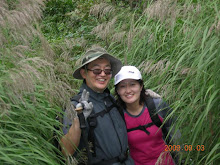Korea is an ancient country with a history of more than five thousand years. It is therefore hard to pinpoint the origin of the Korean people. The early inhabitants on the Korean Peninsula, according to a theory, were a Tungusic branch of the Ural Altaic family who migrated from the northwestern regions of Asia to the southern Manchuria and the Korean Peninsula some five thousand years ago.
Legend has it that Tangun, the first great ruler of Chosun, organized various primitive tribes in the northern region of the country into a kingdom about 24 centuries before the birth of Christ. The Tangun era lasted about 1,200 years, followed by the Kija dynasty which lasted about 99 years. The Kija dynasty, established by a time. Chinese scholar by that name, was essentially a city state. Meanwhile, in the southern region of the Korean Peninsula three tribe states of Mahan, Chinhan and Pyonhan were established at about the same
They unleashed what historians call the-Three Hans period there. The rule of the Kija dynasty came to an end in 194 B.C., when power was seized by Weiman who also came to Pyongyang from China. In 109 B.C. the Chinese Han dynasty extended its power over the northern Korea and remained there for the next four hundred years, establishing four colonies of Lolang (Nakrang), Chenfan (Chinbon), Hsuantu (Hyondo) and Lintun (Imdun). The Lolang tombs, dating from 108 B.C. to 200 A.D., have revealed some examples of exquisite lacquer work, bronze mirrors and jewelry.
Location
 Korea consists of a mountains peninsula and 3,021 contiguous islands. It is seperated from Manchuria by Yalu River Mt. Paekdu and the Tumen River. The Tumen River sepertes Korea from the Siberia at its mouth. The Korea peninsula is flanked by two oceans, the East Sea to the east and the West(Yellow)sea to the west. It lies between 124.11 degrees and 132.52 degrees East Longitude and between 33.06 degrees and 43.1 degrees North Latitude in the northern temperate zone of the Eastern Hemisphere. The standard time is based on meridian passing through the center of the peninsula along 135 East Longitude. The total area of Korea is about 221,000 square kilpmeters -- 99,173 square kilpmeters in south Korea, 122,827 square kilpmeters in North Korea. The longest distance in the peninsula from north to south is 600 miles, and the average distance from west to east is 170 miles.
Korea consists of a mountains peninsula and 3,021 contiguous islands. It is seperated from Manchuria by Yalu River Mt. Paekdu and the Tumen River. The Tumen River sepertes Korea from the Siberia at its mouth. The Korea peninsula is flanked by two oceans, the East Sea to the east and the West(Yellow)sea to the west. It lies between 124.11 degrees and 132.52 degrees East Longitude and between 33.06 degrees and 43.1 degrees North Latitude in the northern temperate zone of the Eastern Hemisphere. The standard time is based on meridian passing through the center of the peninsula along 135 East Longitude. The total area of Korea is about 221,000 square kilpmeters -- 99,173 square kilpmeters in south Korea, 122,827 square kilpmeters in North Korea. The longest distance in the peninsula from north to south is 600 miles, and the average distance from west to east is 170 miles.Overview
 Korea has undergone rapid changes since its once closed society was exposed to western culture about a century ago. Western culture has since influenced the traditions developed by the Korean people since the nation was established on the Korean peninsula some 4,300 years ago. Today long beards, white costumes and horsehair hats are rare sights, even among elderly people. In Seoul and other major cities around the country, vast majority wear western suits, shoes and haircuts, and live in western styled houses. Traditional manners and styles are also on the rapid decline. However, many Koreans have made continuous efforts to prevent those priceless, intangible assets from becoming extinct.
Korea has undergone rapid changes since its once closed society was exposed to western culture about a century ago. Western culture has since influenced the traditions developed by the Korean people since the nation was established on the Korean peninsula some 4,300 years ago. Today long beards, white costumes and horsehair hats are rare sights, even among elderly people. In Seoul and other major cities around the country, vast majority wear western suits, shoes and haircuts, and live in western styled houses. Traditional manners and styles are also on the rapid decline. However, many Koreans have made continuous efforts to prevent those priceless, intangible assets from becoming extinct. 

No comments:
Post a Comment